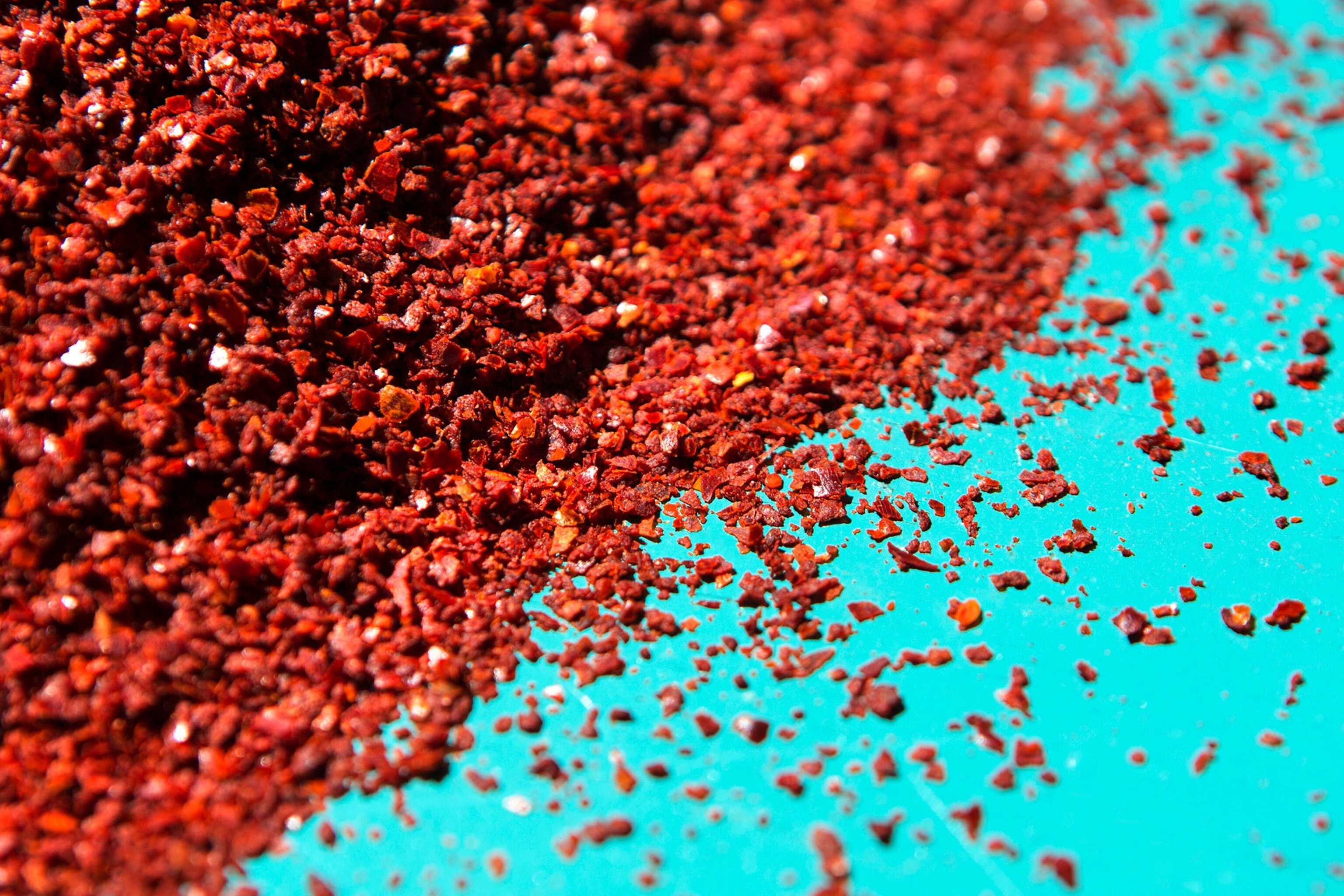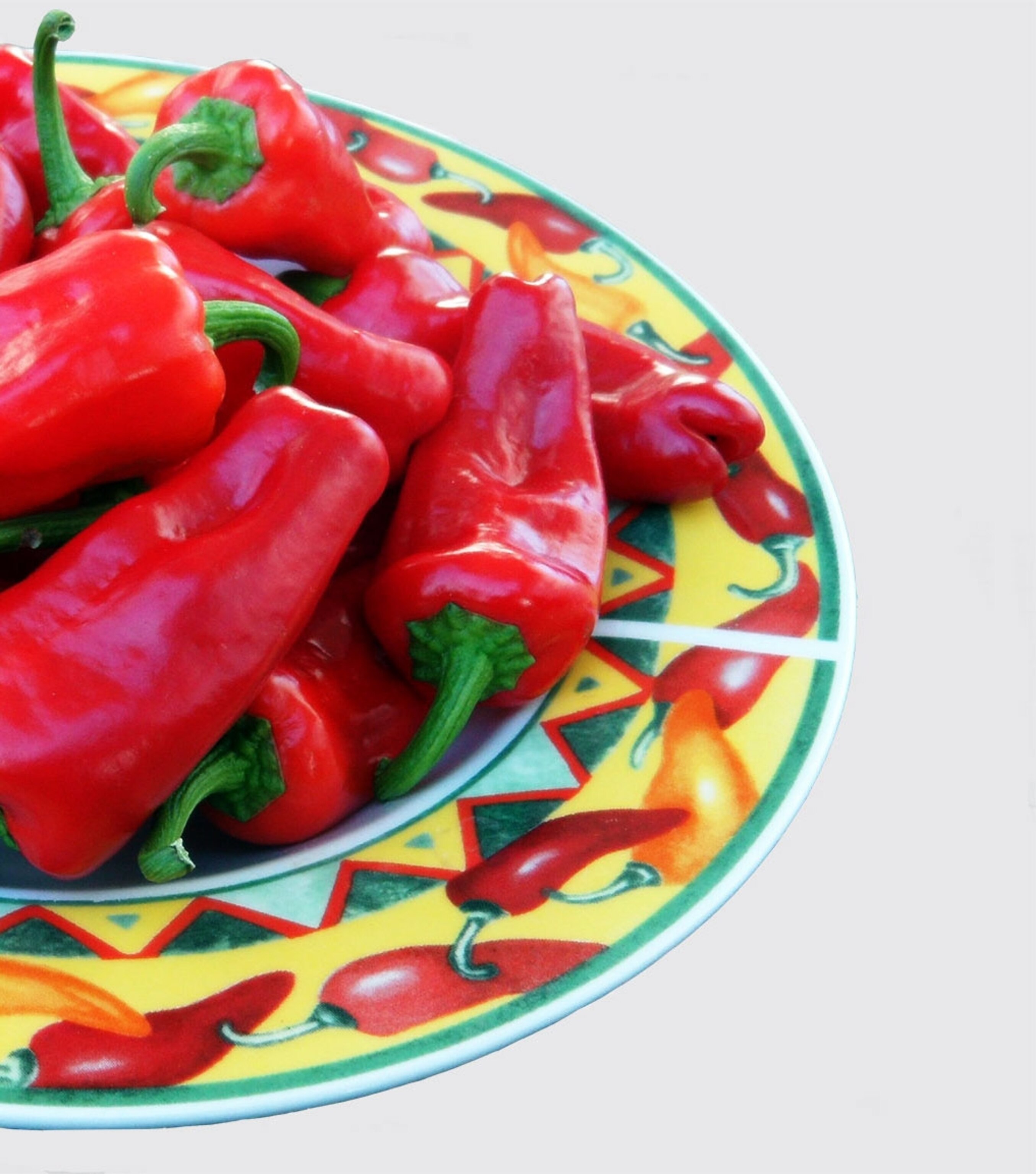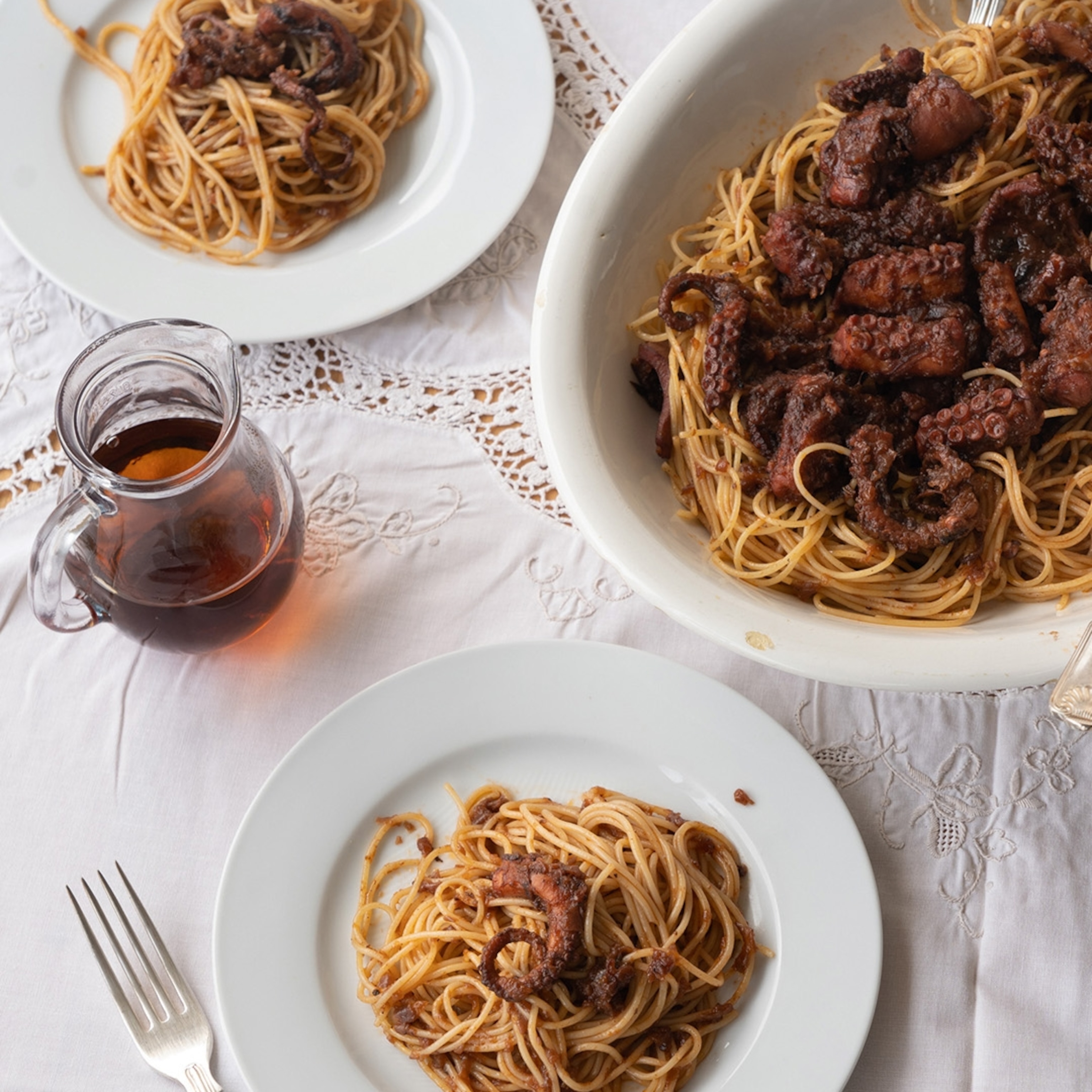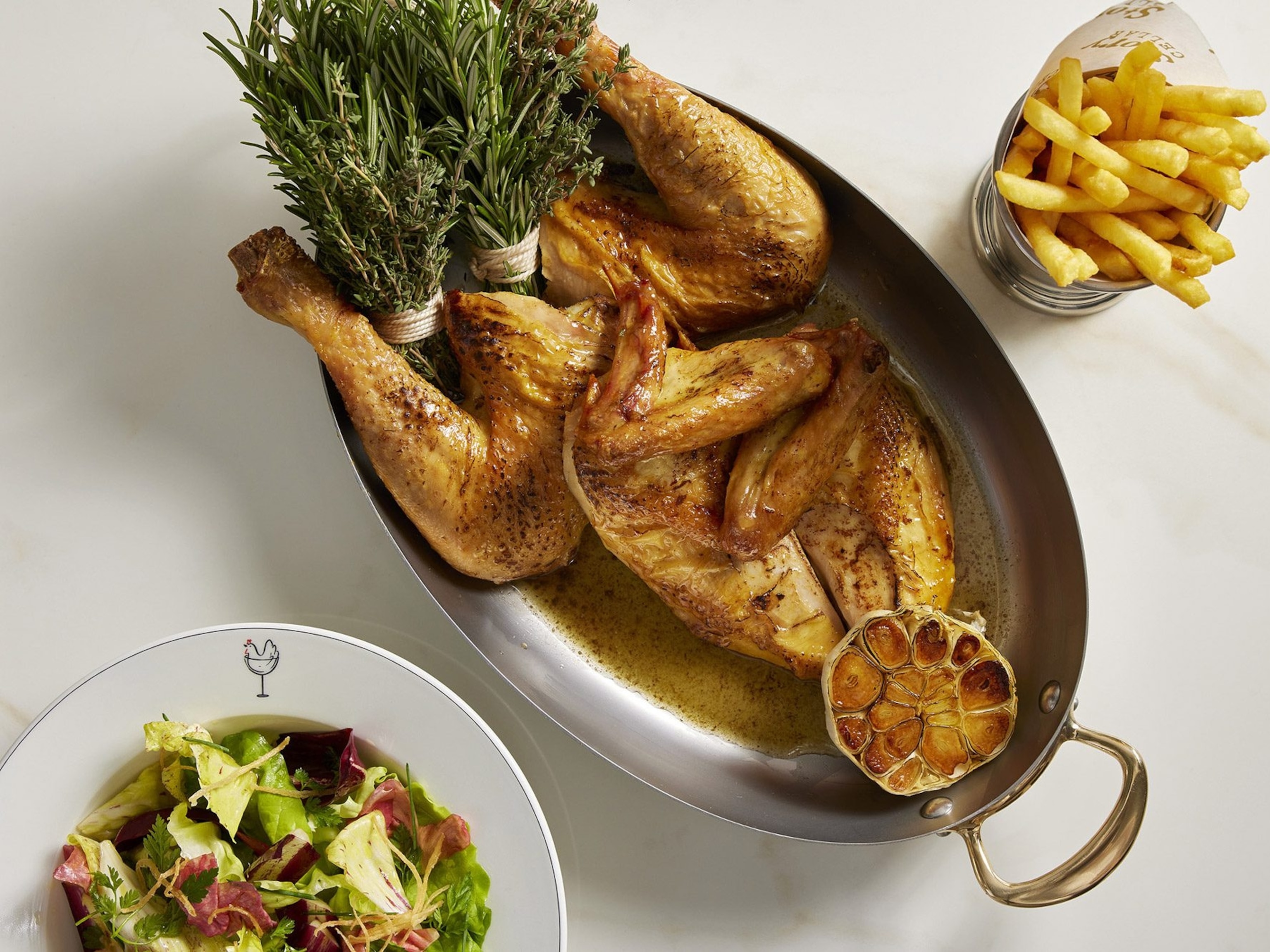
How Syria’s Famous Aleppo Pepper Might Be Saved
Chef Jeremiah Langhorne starts diners at his restaurant The Dabney with house-made ciabatta bread. He turns this homey comfort into an exotic dish by adding a generous dusting of Aleppo pepper, an adobe red, large-flaked, native of its namesake city, Aleppo, Syria.
Like its ancestral home, the path the pepper takes from seed to plate has been tragically disrupted by war. And its presence in a Washington, D.C. restaurant shows both the complexity of the global spice trade, and the steadfastness of chile peppers.
In the last five years, with Syria’s exports unpredictable at best, many Syrian spice growers moved their operations north, across the border into Turkey, according to Christine Sahadi Whelan, who sources products for the Brooklyn-based food importer Sahadi’s. But some of the pepper didn’t quite make the transition. “The first ten samples of the Aleppo from Turkey weren’t the same product. Wrong color, wrong taste, wrong flake. We worked with our exporter until we found the right source.”
Finding a good source for the real thing is critical. Johanna Mendelson Forman, who blogs at Conflict Cuisine, has spoken with those involved with humanitarian aid and other efforts in war-torn Syria. She reports that within each city there may be supplies, but nothing is getting out for export. Beware Urfa pepper, often substituted as “Aleppo-like,” she says, but “smokier, darker and definitely much hotter.”
Saving the Aleppo isn’t just a project for spice-hungry Americans. “Syrians are very proud of the quality of their food,” Whelan says (think fava beans, tahini, stuffed vegetables and tiny meatballs in cherry sauce.) “They go out of their way to protect traditions, one of which is producing and providing really good food. They wanted it to be right just as much as we did.” With hundreds of thousands dead and livelihoods destroyed by the conflict, the loss of a spice might not seem like a big deal, but it’s not just a flavor, it’s history (see How the Syrian Conflict Affects Your Spice Rack.)

The Aleppo pepper’s origins go back to Christopher Columbus, says long-time Chicago spice merchant Tom Erd. Columbus brought peppers to Europe from the West Indies and from there they spread throughout the known world. Spices were currency and the spice trading Moors moved the peppers from Spain into North Africa. From there, chiles spread throughout the Ottoman Empire, parts of which include modern Turkey and Syria. The conditions were ideal for peppers. “Chiles are prodigious, they cross breed like crazy,” Erd says. And new varieties of chile peppers soon sprang up, including the Aleppo.
The Aleppo then caught on in the United States. In Boston, at Townsman, Chef Matt Jennings uses Aleppo pepper for its fruity and bright qualities. But finding it hasn’t been easy. “At least once a week, I have to go rifle through the Middle Eastern markets for chile peppers,” he says. “The hunt for these chiles has become more of a challenge.”
James Duffy, owner of Refining Fire Chiles, knows about hunting down chiles. As a well-known and reliable source for seeds, Duffy is a self-described Fire Eater, but he also appreciates the complexity of Aleppo and others in the capiscum annuum botanical family. About four years ago, after a chef in Los Angeles asked him about Aleppo pepper, he hunted down seeds (remarkably, from an Italian botanist who sourced seed from the USDA seed bank) “and grew out a few plants” at his California home. He saved those seeds and grew another round of plants, along with Urfa and Maresh varieties. Soon he had seeds to sell.
Duffy sources, swaps and sells seeds with traders around the world via Facebook, Ebay and other online communities. More traditional merchants, like Erd, attend spice conventions where he expects other merchants will be talking about the war and sourcing Syrian spices.
In 2015, Deirdre and Phil Armstrong in Staunton, Virginia ordered Aleppo pepper seeds from Duffy. The Armstrongs’ Harvest Thyme Herb Farm provides culinary herbs and chile peppers to Charlottesville chefs and one Washington, D.C. chef: Jeremiah Langhorne. And that is how fresh Aleppo peppers ended up in the kitchen at The Dabney.
Langhorne is a curious chef and a dedicated researcher. He offered the Virginia grown Aleppo peppers the same treatment they are given in Syria, first fermenting them in salt and then drying them thoroughly. He stores the chiles whole and grinds them as needed.
Whether the city of Aleppo will ever return to exporting their namesake chile pepper remains in question. Does where the seed is grown change the flavor, as in Champagne grapes or Alps-centric Comte cheese? Is there terroir in chile peppers? Chefs and seed traders were unsure; but everyone interviewed considers worldwide seed availability a boon.
And the fact that the Aleppo peppers could be brought back shows the importance of seed banks, to preserve the plants and flavors humans come to rely on, but too often destroy. (See Scientists Say Go Wild to Preserve Crops for the Future.)
Some Syrians are doing what they can for the future of the beloved pepper, Johanna Forman says. “The Syrians are so accustomed to conflict, and at the same time so determined to maintain their traditions, they create spaces in their homes where they keep supplies. Most households retain a small supply of seeds, too.”
Meanwhile in the kitchen at The Dabney, Langhorne dried Aleppo seeds to return to the Armstrongs, and in one simple gesture, perpetuated the 21st century spice trade. “It’s really quite amazing if you think about it. One seed can grow a plant that can produce hundreds of peppers each with many seeds themselves. It’s incredible.”
Cathy Barrow is the author of the food blog Mrs. Wheelbarrow’s Kitchen. She has also written for the Washington Post, New York Times, Saveur, Garden and Gun, Southern Living, and NPR, among others. She lives in Washington, D.C., with her husband, Dennis, two schnauzers, and an all-white cat. In 2015, she won the prestigious IACP Award for best single-subject cookbook for Mrs. Wheelbarrow’s Practical Pantry. She’s on Facebook, Twitter, and Instagram.








